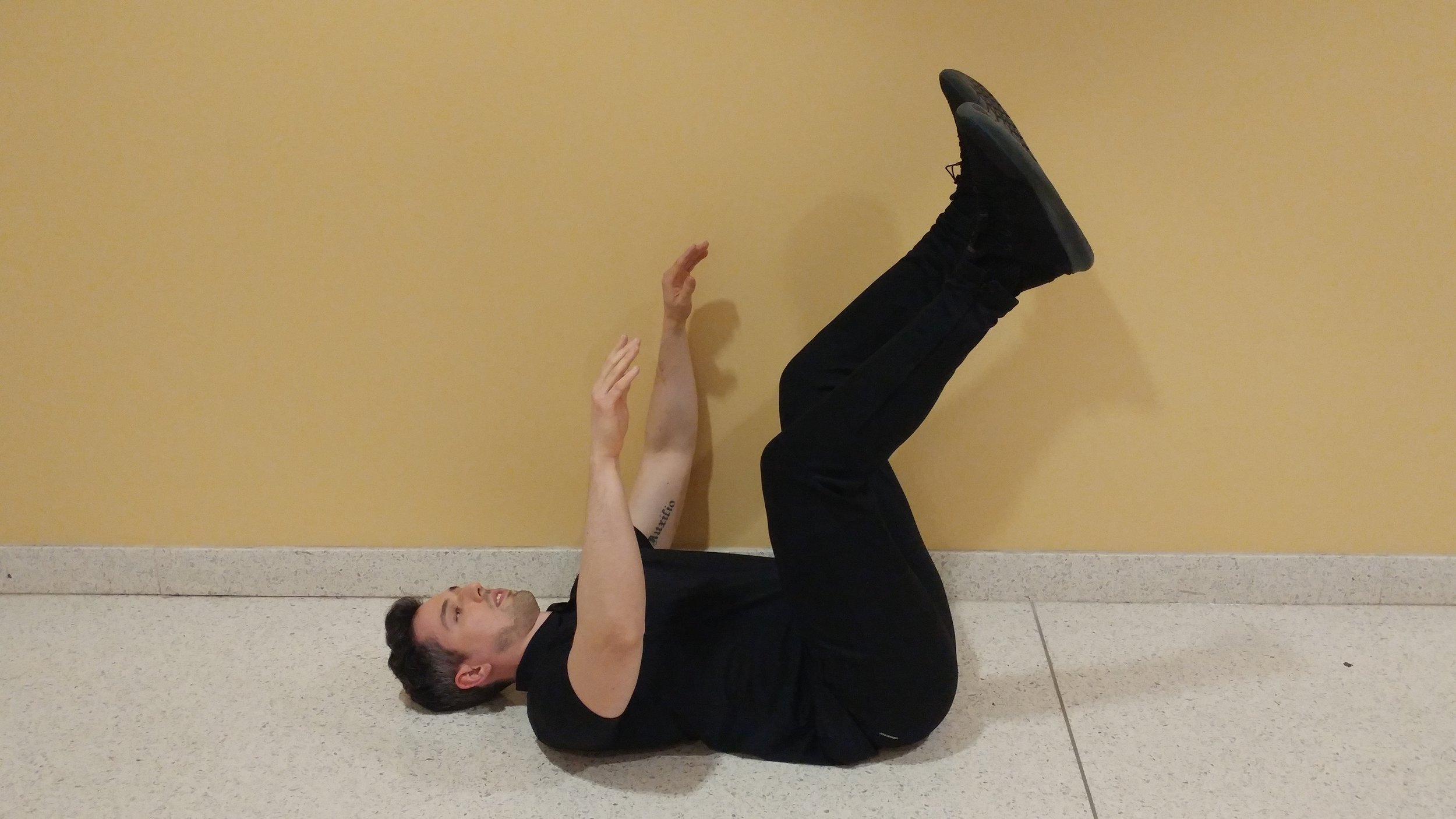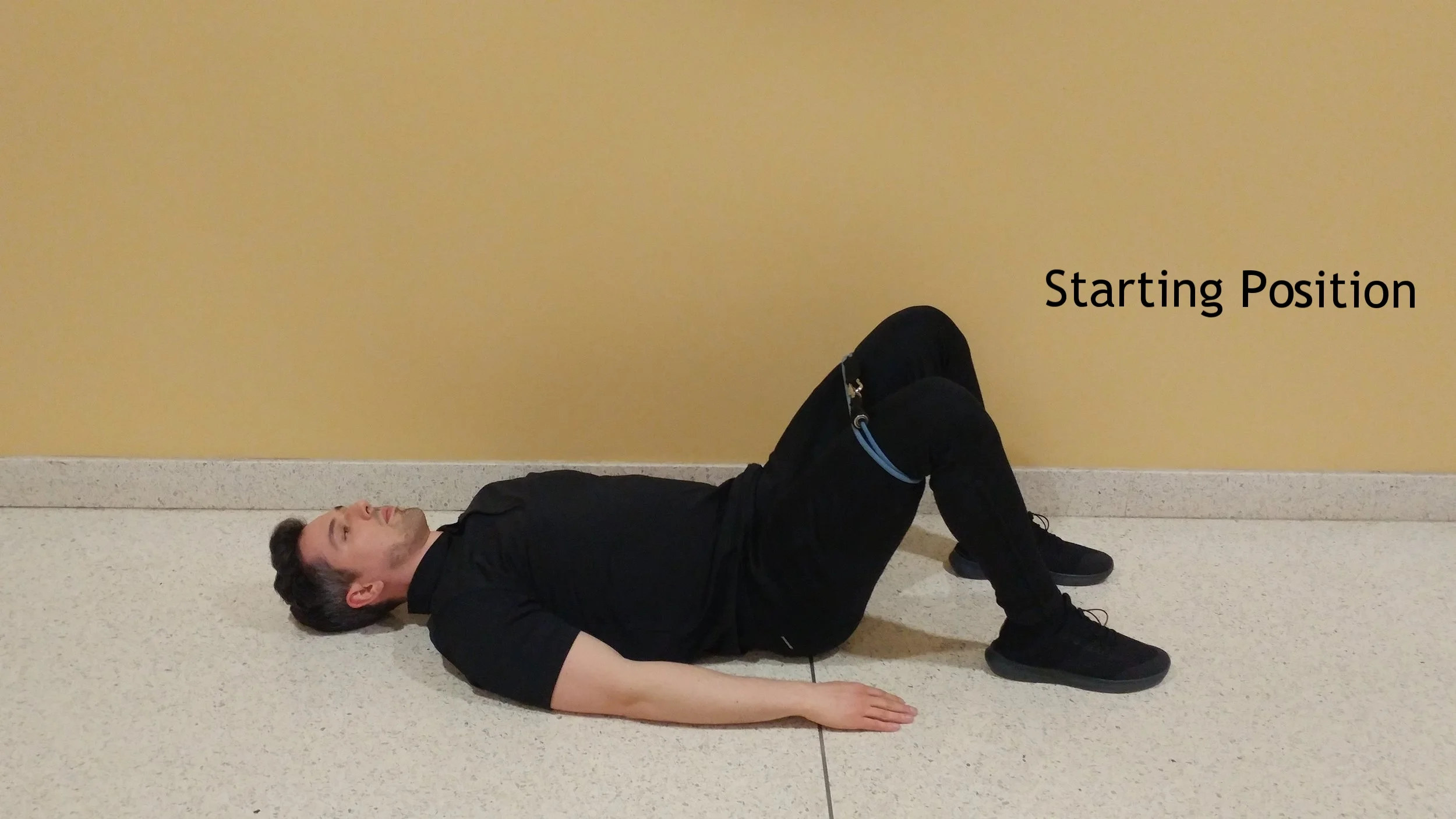Prioritizing the Transverse
In past posts we have discussed the importance of the transverse abdominis, and in this last part of the series will be focused on providing you with strategies to activate and strengthen your transverse. The transverse abdominis must pre-activate before any limb movement occurs; the end goal of these exercises is not just to strengthen, but to prioritize the firing of this muscle- thereby optimizing your functional movement patterns.
Dead Bug:
The goal of this exercise is to control the activation of your transverse while stabilizing the upper and lower limbs. This exercise will reinforce the concept of pre-activation of the transverse before limb movement occurs.
Starting Position:
-Lying Flat on your back with your legs and arms raised up in the air.
-The shoulders should be relaxed, and the arms should be held in a way such that the wrist is in line with the elbow and the elbow is in line with the shoulder.
-The thighs should be positioned in a way such that the angle between them and the torso is less than 90 degrees. This is necessary so as not to engage the hip flexors and cause the pelvis to tilt forward.
-There should be a slight bend to the knees, and the toes should be pointed, in order to limit quad muscle activation.
Action:
-Once your legs and arms have been positioned correctly, brace your core by pulling the belly button in (slightly) towards your spine and pushing your low back into the floor.
-There should not been any space between your low back and the surface you are lying on.
-Hold this braced position for 1-3 seconds, and then relax fully before initiating another repetition.
Dead Bug Progression:
Once you feel confident in holding your dead bug position, you can begin to incorporate limb movement. You will be moving opposite arms and legs in this progression to mimic the cross crawl pattern of the gait cycle. As always, you should seek to keep your transverse engaged and your low back flat against the floor throughout the exercise. The goal is to bring opposing limbs in contact with the ground, without losing tension in your core or the neutral posture of the low back. If at any point your low back begins to lose contact with the ground when moving your opposing limbs, do not push past this point. If you do not stress proper posture and positioning in this movement, there will be no therapeutic value to it. We are looking to change and optimize your movement patterns, not reinforce existing ones! Work up to the point where you are struggling to maintain postural control, and hold that position for a 1-3 second count. Gradually progress through these plateaus, do not try and rush or power through anything.
Glute Bridge ( with resistance band):
This exercise is traditionally used to activate the glutes and prioritize their function in hip extension. Hip extension is an integral part of your gait cycle, and is involved whenever you are walking, running, or performing weighted exercises in the gym (such as lunges). With some slight modification, this movement can also be used to train the proper functioning of the transverse as well. As covered before, the transverse abdominis should be active before any limb movement occurs, and should continue to be active when a limb is in motion. The goal of this exercise is to pre-activate the transverse abdominis in the starting position, and to maintain tension in that muscle throughout the entirety of the motion of hip extension. This will allow us to create more stable and more efficient movement patterns.
Starting position:
-Lying flat on your back with knees bent, feet flat on the floor and spaced hip width apart.
-Your heels should be spaced about 6-8 inches from the glutes.
-The resistance band should be placed just above the knee (about 2-3 finger widths from the knee cap).
Action:
-Press out against the resistance band, and bring the knee in line with the hip. This will place pretension in the glute muscles.
-Engage the transverse by pulling the belly button in towards the spine, and flattening your low back against the ground. This will ensure that the posture of your pelvis and low back are neutral.
-Maintain all of the postural queues discussed above while raising the pelvis towards the ceiling.
-Keep the feet flat on the ground, and try to focus on keeping your weight over the mid-foot (not the ball of the foot or the heels).
-At the top of the movement, your torso, your pelvis and your thighs should all be in alignment.
-Hold this final position for no longer than a 1 -2 second count before slowly lowering yourself back down to the ground.
**When you have lowered yourself back down to the starting position, your low back should still be flat against the ground. If it is not, then you lost postural control at some point during the exercise, and that repetition will have no therapeutic value. Remember, we are trying to change movement patterns, not reinforce existing ones! **
#Chiropractic #Low Back Pain #Chiropractor #Rehab #Rehabilitation #Functional Movement #Functional Training #Hip Pain #Core #Core Strengthening #Postural Correction #Posture #Injury Prevention #Health #Wellness #Movement Patterns #Movement #Burke Chiropractic #Burke Chiropractor #NOVA Headache and Chiropractic Center




